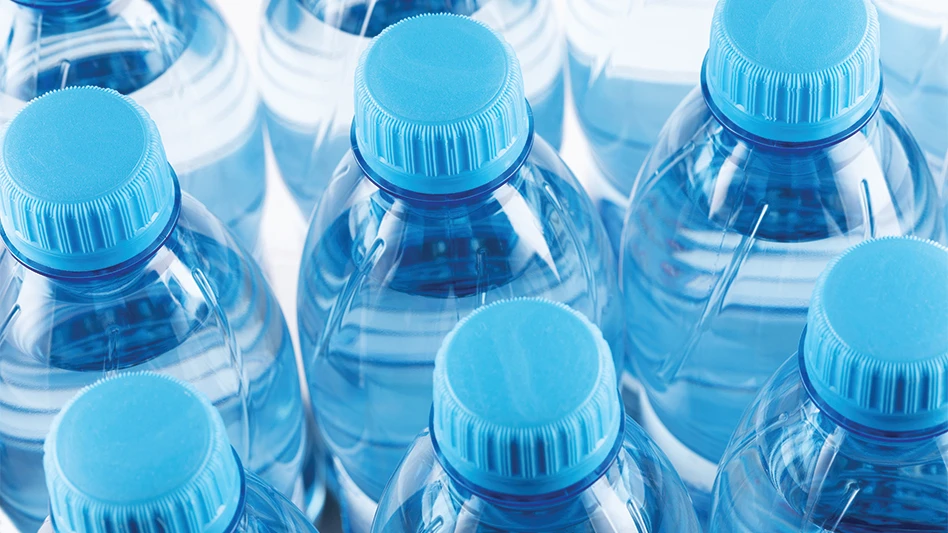
Irin Fierce | stock.adobe.com
Polyethylene terephthalate (PET) bottle recycling rates across the United States made a notable climb in 2023, according to Middleton, Wisconsin-based National Association for PET Container Resources’ (NAPCOR’s) 2023 PET Recycling Report.
Per the annual report, the U.S. PET bottle collection rate was 33 percent in 2023, a 4 percent increase from 29 percent in 2022 and the highest recycling rate in the U.S. since 1996. Additionally, NAPCOR reports the average amount of postconsumer recycled (PCR) PET, or rPET, used in U.S. bottles and jars was 16.2 percent last year, up three percentage points from 13.2 percent in 2022 and the highest level ever recorded.
According to NAPCOR, this demonstrates increased demand for recycled PET nationwide.
RELATED: Coca-Cola’s shift in packaging goals troubles environmental groups | Helping brands make a PCR push
NAPCOR notes PET is clear, durable and versatile, accepted in virtually all U.S. recycling programs and recycled at higher rates than other plastics. The organization says a PET bottle can be fully recycled and made with up to 100 percent postconsumer recycled material.
NAPCOR cites its own life cycle analysis showing that when comparing a 12-ounce glass bottle, a 12-ounce aluminum can and a 16.9-ounce PET water bottle, the plastic bottle consumes 80 percent less energy during production, creates 80 percent less solid waste, uses 53 percent less water during production, has a 74 percent lower global warming potential and generates 68 percent to 83 percent fewer emissions that can contribute to acid rain and smog formation.
“PET plastic bottles play a vital role in a circular economy because they can be designed to be remade, and our members are working hard to ensure they get recycled,” NAPCOR Executive Director Laura Stewart says. “NAPCOR’s 2023 PET Recycling Report shows that while there were fewer PET bottles available to recycle in the U.S., there were still more PET bottles recycled in 2023, resulting in a higher recovery percentage. When manufacturers, consumers, retailers and recyclers work together to ensure PET is selected, collected and recycled, our planet reaps the rewards.”
In 2023, NAPCOR reports the collection rate reached the highest level in nearly 30 years because of growth in PET bottles collected and fewer bottles available for recycling compared to 2022. The U.S. collected 1,962 million pounds of PET bottles for recycling in 2023, the highest annual weight for U.S. bottle collection ever recorded, up from 1,911 million pounds in 2022—an increase of 2.7 percentage points
The total pounds of PET bottles available for recycling in the U.S. last year was 5.952 million, down 9.8 percent from 6,599 million pounds in 2022. NAPCOR reports domestic sales of virgin and recycled PET resin to nonfood/beverage bottle applications, such as personal care packaging and household cleaners, were down by “significant margins” compared with 2022.
The organization claims the trend of increasing rPET content in U.S. bottles has accelerated in recent years because of voluntary brand commitments and legislation that includes recent mandatory recycled-content laws. This follows a period from 2014-2017 in which rPET use remained flat, hovering between 6 percent and7 percent. Last year, the rate of rPET content in U.S. bottles reached a record high of 16.2 percent, and the amount of rPET used in U.S. bottles in that same period increased to 966 million pounds from 870 million pounds in 2022—an 11 percent difference.
Of the total usage of rPET in U.S. and Canadian end markets, NAPCOR says the fraction that went to bottle applications reached a new high of 59 percent last year, surpassing the previous record of 54 percent in 2022.
“NAPCOR’s 2023 PET Recycling Report underscores the ever-growing demand for PCR content,” Stewart says. “To meet this demand, NAPCOR and the PET industry are eager to work with the government and other stakeholders to improve the collection and recycling of PET plastic.”
North America also achieved a significant recycling milestone, reaching a new high of 41.3 percent in 2023 and surpassing the global standard set by the Ellen MacArthur Foundation, which in 2016 defined “successful recycling” as achieving a 30 percent recycling rate across regions with a combined population of at least 400 million.
Since 2019 when NAPCOR began tracking the North American rate, the region’s PET bottle recycling rate has consistently exceeded the 30 percent benchmark.
The 29th edition of NAPCOR’s report is based on survey data, interviews within the market, import data and independent analysis by the organization. The 2023 report includes a variety of data:
- PET bottle recycling rates for North America and the U.S.;
- postconsumer PET bottle recycling activity;
- PET thermoform market analysis for the U.S. and Canada;
- rPET in the U.S. fiber market; and
- the PET and rPET supply chain from 2023 through October of this year.
Copies of the report can be purchased at NAPCOR’s website.
Latest from Recycling Today
- BMW Group, Encory launch 'direct recycling’ of batteries
- Loom Carbon, RTI International partner to scale textile recycling technology
- Goodwill Industries of West Michigan, American Glass Mosaics partner to divert glass from landfill
- CARI forms federal advocacy partnership
- Monthly packaging papers shipments down in November
- STEEL Act aims to enhance trade enforcement to prevent dumping of steel in the US
- San Francisco schools introduce compostable lunch trays
- Aduro graduates from Shell GameChanger program





